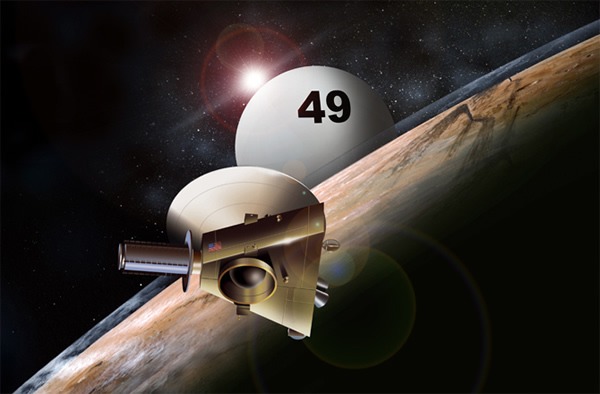What Space Mission Would a Mega Millions Win Buy?
Today, it was announced that there are two winners of the second largest jackpot of the U.S. Mega Millions lottery. The lucky tickets were bought in California and Georgia. At the time the winning numbers were picked, the jackpot totaled $636 million, but CNN reports that number will likely rise closer to $648 million.
This mind-boggling figure comes after Mega Millions restructured the betting system last year to make payouts bigger, decreasing the chances of winning from 1-in-176 million to 1-in-259 million. You have a far (FAR!) greater odds of being hit by lightning in your lifetime — a 1-in-6,250 chance. But it seems that the increasing number of zeros on a lotto check is directly proportional to the flagrant disregard for the math behind probability.
While $636 million is a number unfathomable to the vast majority of us, to the U.S. government’s annual budget, that’s just a rounding error. But it got me thinking: for fun, what planetary mission would a Mega Millions jackpot pay for? Sure, it’s like comparing apples and pears — it’s not like there’s a competing lotto for spaceship funding (although that would be nice) — but it would be interesting to make the comparison.
Starting out with NASA’s big planetary mission of the year, the Mars Atmosphere and Volatile Evolution (MAVEN) orbiter (that was launched in November and set to arrive at Mars in September 2014), the cost of the spacecraft, launch and operations comes to a grand total of $671 million. In fact, in a rare twist, MAVEN is expected to come in under its $671 million budget, allowing for some extra science, according to Spaceflight Now. MAVEN will study the red planet’s atmosphere to try to understand why it became so thin, inevitably providing key clues to Mars’ past habitable potential.
How about the moon? Well, NASA’s Lunar Atmosphere and Dust Environment Explorer (LADEE) that recently entered moon orbit to unravel the moon’s dusty exosphere mysteries has a total project cost of $280 million.
Of course, these recent space missions are only a tiny sampling of planetary missions that NASA, Europe and other space agencies are currently operating and many are a lot more expensive. Take NASA’s Juno mission that buzzed Earth in October on its way to Jupiter, which has a projected mission cost of $1.1 billion. NASA’s Mars Science Laboratory Curiosity? $2.5 billion. What about the awesome, long duration Cassini mission? $3.26 billion.
Probably the biggest surprise to me, however, is the $636 million Mega Millions jackpot would cover the vast majority of the total running costs for a robotic mission to Pluto. Yes, NASA’s New Horizons mission to the dwarf planet will come in at $700 million for the spacecraft and operations until 2016. So you’d have a choice: As the sole winner you could buy a New Horizons or a MAVEN; sharing the win, you could buy a LADEE.
For me personally, I’d spend my win on a Europa flyby. Of all the places in the solar system where life may thrive, I want to know if the icy moon of Jupiter can indeed support life. As it would take some significant oomph to get to Jupiter orbit and survive the high-radiation environment and do some science during the flybys, it is thought that a “Europa Clipper” mission would cost in the ballpark of $2 billion, a concept that is currently too high for NASA to entertain beyond concept studies. But as the goal is so important, I’d at least buy a share of a Europa flyby mission (over a quarter of a Europa Clipper). Every little helps, after all.
The scientific returns of these missions are, in my view, priceless. To understand our solar system and our place in it, we send robotic emissaries to fly by, orbit, probe, dig and sample ahead of any future manned exploration. Alas, in stark contrast to the popularity of the Mega Millions jackpot, NASA’s planetary sciences is currently being gutted. NASA’s budget as a whole is shrinking and the planetary sciences are the soft underbelly where cuts are making the worst inroads.
The science, outreach, inspiration and knowledge these planetary missions bring are worth many times the hardware they cost, but in these strange economic times and, often, government ambivalence toward science, it is these missions that are disappearing and launch schedules are thinning out.
In this beautiful age of science and technology we have the opportunity to be kings on our little corner of the galaxy. Unfortunately, as a civilization, we’re more concerned with short-term profit and celebrity than science and development, a fact that isn’t going to change any time soon.(Dec 18, 2013 07:00 PM ET // by Ian O'Neill)












